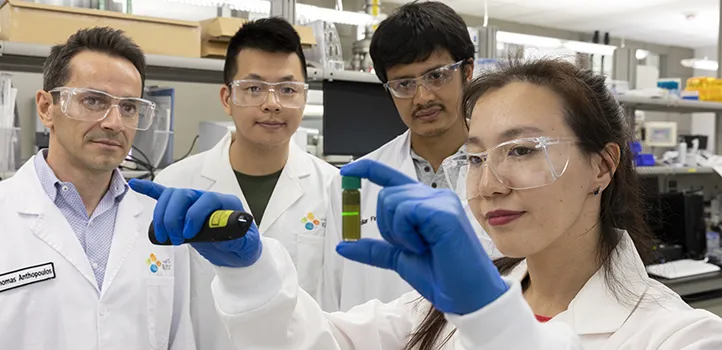Tungsten disulfide helps organic solar cell reach 17% efficiency
- Researchers from Saudi Arabia’s King Abdullah University of Science and Technology claim to have developed a highly performant organic PV cell using tungsten disulfide flakes a few atoms thick. The stability of the device, however, is still to be evaluated.

Researchers at Saudi Arabia’s King Abdullah University of Science and Technology (KAUST) claim they have significantly increased the efficiency of organic solar cells by using tungsten disulfide flakes a few atoms thick.
Tungsten disulfide (WS2) – an extremely slick, dry film lubricant coating which functions in harsh conditions – can be used in solar cells as an electron transport layer, and nanosheets and nanoparticles prepared from electronic WS2 powders are commonly applied to nanoelectronics, optoelectronics, gas-sensing devices, hydrogen evolution reactions and energy storage devices.
The KAUST group created a hole-transporting layer made from flakes of WS2 using ultrasound to tear the flakes off powdered tungsten disulfide suspended in water and ethanol. “This sonication method is inexpensive and easy to scale up and the flakes can be spread onto an electrode using a simple and widely used spin-coating process,” the researchers said.
Efficiency claim
The process reportedly enabled the scientists to produce an organic cell with a conversion efficiency of 17%, a figure said to be the highest for an organic cell based on a 2D material as a hole transporter, and among the highest for organic PV in general.
The Saudi team said the WS2 layer has a lower resistance and is better at gathering holes compared than poly polystyrene sulfonate, which is widely used as a transparent hole transport layer for polymers, silicon and organic solar cells, and which is considered the most successful conducting polymer in practical terms.
“Our immediate goal is to push the efficiency of our organic solar cells well beyond 17% and toward our theoretically predicted limits,” said research author Thomas Anthopoulos, who said the stability of the device must be studied further.
The results of the research were published in the paper 17% Efficient Organic Solar Cells Based on Liquid Exfoliated WS2 as a Replacement for PEDOT:PSS, published in Advanced Materials and publicized on the EurekAlert popular science website.
Tungsten disulfide research
Two years ago, researchers at the same university announced a method of increasing the carrier lifetime of graphene, a development they said could lead to the development of ultrathin, flexible solar cells using the material. That method involved connecting a graphene layer with two atomic material layers – made of molybdenum disulfide and tungsten disulfide.
An international team of researchers led by the University of Tokyo announced in August it was investigating applications for a WS2 semiconductor nanotube, which it said exhibited the bulk photovoltaic effect at an efficiency far higher than in other materials known to display the phenomenon. The Tokyo team said WS2 only exhibits the photovoltaic effect when rolled into asymmetric nanotubes, giving the current generated a preferred direction to flow in.
Also read

